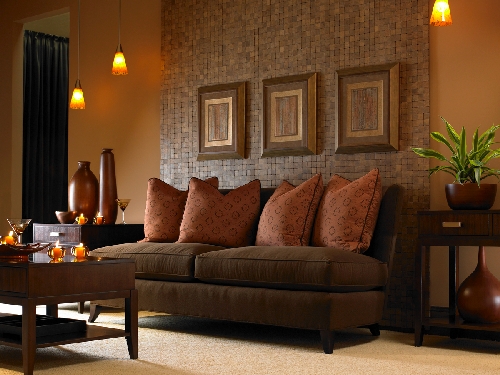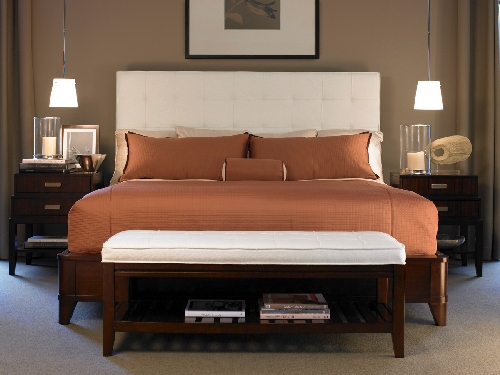Multitude of choices make carpet selection difficult
"You choose, you live with the conse-quences. Every yes, no, maybe creates the school you call your personal experience." Richard Bach (1936- ), American writer
Carpet is second nature to us. We walk on it every day in our homes and work places, at school and in retail outlets. But, there is a lot we don't know, and this lack of knowledge creates havoc when we shop for carpet and can lead to expensive mistakes. I purchased carpet and padding recently and while I've been around flooring for many years, I knew all too well what I didn't know.
The first thing you will usually be asked at the carpet store is what material do you prefer. The choices begin.
Nylon is the most widely used fiber and is mostly known for its strength. It is extremely durable and resilient. Because of its resistance to matting and wear, you will never see a visibly worn carpet path in even the busiest spots of your home. Nylon carpet fiber is soft yet strong, shows color brilliantly and cleans well. Though not inherently stain resistant, most nylons are treated for protection against household spills and stains.
The use of polypropylene (also called olefin) in carpet has grown dramatically during the past 10 years due to the popularity of Berber style loop carpets. Polypropylene is extremely resistant to stains, fading and moisture. Polypropylene is also notably colorfast because it is solution dyed, which means the color is added during production and not dyed later. The color is such an inherent part of the fiber that you can even clean polypropylene with bleach.
Appreciated for its versatility, polyester's popularity continues to grow. Polyester offers exceptional softness, making it ideal for thick, cut-pile styles. Polyester is also naturally and permanently stain resistant and fade resistant. It has excellent color clarity, color retention, strength and abrasion resistance. Carpets made from this fiber are easily cleaned and they resist water-soluble stains.
Wool is the preeminent natural fiber and yields a soft, warm, comfortable feel. Although wool does not possess natural resistance to moisture or abrasion, it ages well and is easy to clean. Because it is the most expensive carpet fiber, wool is generally used only in luxury carpets and area rugs.
The intended room for the carpet should help to guide your decision. For instance, in a bedroom, any of these would work. More than likely there will not be a tremendous amount of traffic so wear will not be a big issue. In children's bedrooms, play rooms or dens, nylon or polyester might be a better choice.
The next big choice is color, and if you remember my somewhat tongue-in-cheek tips, at the top of that list not to buy blue carpet. Pick a nice neutral color (just how many tans and creams are there?) so that when you change your furnishings, linens, upholstery or window treatments, your floor will not be an issue.
Carpet padding is another issue to be decided, and my advice is to buy the best pad you can afford. A good carpet pad not only gives better resilience and comfort underfoot, it can extend the life of your carpet, especially on stairs. Because some carpets carry warranties with specific density and thickness requirements, be sure and review your warranty before purchasing your pad. The type of pad may be specified in the warranty.
The carpet pad makes carpet feel better. Every step you take creates hundreds of pounds of pressure per square inch in your floor covering. Carpet padding, or cushion as it is sometimes called, helps alleviate that pressure. The decrease in pressure helps make your carpet feel richer, thicker and softer.
Padding also will help keep your carpet cleaner. Dirt can grind down carpet fiber the way sandpaper wears down wood and thus shortens carpet life. A quality cushion makes cleaning more efficient because it raises carpet off the subfloor and provides an air space underneath, allowing the carpet to breathe. When you vacuum, that space allows more air to come up through the carpet, carrying more dirt along with it. The result is more effective cleaning every time.
And most importantly, it will make your carpet last longer. A quality carpet cushion helps decrease pile crushing, the acute compression of fibers in a high-traffic area, particularly in hallways. The pad allows the carpet to maintain its pile height and stay looking new for much longer. Industry studies have shown that quality cushion can actually increase the useful life of carpet as much as 50 percent.
Now that you have your new carpet here are a few tips for maintenance.
Easy, proactive steps will keep your carpet looking good over time. Don't track dirt inside. Placing walk-off mats outside all entrances will help by absorbing soil and moisture and trapping excessive dirt, sand, grit, oil, asphalt or driveway sealer that might otherwise be tracked into the home. Clean mats on a regular basis so they don't become sources of soil themselves.
Occasionally move heavy furniture. Moving your furniture on occasion won't just renew the feel of your room, it will also help avoid excessive pile crushing. Also consider using carpet protectors under the legs of tables, chairs and other furniture to help distribute the weight. Damage can occur if you use chairs or appliances with rollers or casters without a chair pad designed specifically for carpet.
Reduce periods of direct sunlight on your floors. Protect your carpet from prolonged periods of direct sunlight with blinds, shades or awnings.
There is a lot to know about carpet and these tips are just the beginning. Do your research and shop around. There are as many prices as there are styles, colors and textures. Make your choices a good personal experience.
Carolyn Muse Grant is a design consultant, expert home stager and creator of beautiful spaces. Questions can be sent to her at creativemuse@cox.net.


















